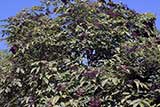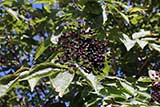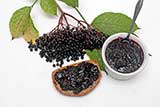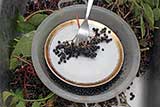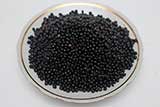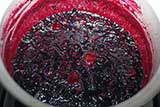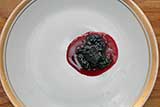Meats and Sausages
Elderberry-Apple Jams
Elderberry (Sumbucus nigra) can be found in moderate climate all over the world. The berries are credited with alleviating allergies and treating the flu. The tree produces abundance of fruit and is very common in North Europe where it grows everywhere, in gardens, parks and on streets.
Elderberries are commonly used in Europe to make wines, cordials, jams, fruit pies and relishes. Both, flowers and ripe berries are used for food. St. Germain, a French liqueur and Hallands Flader, a Swedish akvavit are made from elderflowers. The Italian liqueur Sambuca is flavored with elderflowers.
- 500 g elderberries (without stems)
- 500 g green not ripe apples (peeled, cored and finely diced)
- 600 g sugar
- Juice from ½ lemon
- Lemon zest from 1 lemon
1. Using fork separate berries from stalks. Peel and core apples, dice into small cubes.
2. Place elderberries in pot, and bring slowly to a boil, stirring constantly. Once the berries release juice, add diced apples. Bring to a boil.
3. Decrease the heat, add sugar and lemon juice, grated lemon zest, and cook over low heat for 40 minutes stirring often until the jam thickens.
Perform refrigerator test.
4. Fill jam into jars and process in water bath canner for 10 minutes.
5. Remove jars and let stand for 12 hours.

